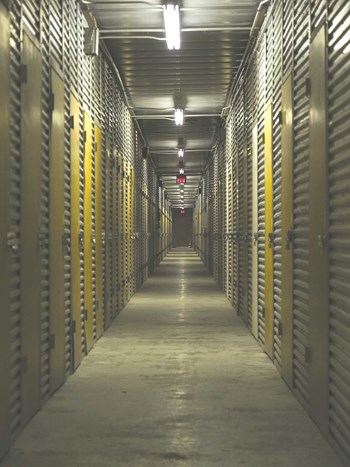
This is about the easiest decision—the closest thing to a no-brainer—a co-op or condo board of directors will ever need to consider: what to do with vacant space.
Install storage lockers. If you already have storage lockers, install more storage lockers.
What other building amenity pays back its initial investment in a year or two, turning a bleak, dark hovel in the basement into a perpetual money-maker while making closet-space challenged residents very happy?
“We are all hoarders to some degree or another and condominium living, for all its benefits, does not lend itself to storage,” says Robin Habacht, co-founder and president of Monticello Property Management in Matawan, New Jersey. “Storage units are invaluable to condominium living and may serve as a revenue portal for an association to offset expenses or the initial cost of installing a storage system, if one was not part of the original building plan.”
For co-op and condo conversions of older buildings, which were not typically designed with built-in storage space, turning vacant basement or other space in the building into a storage room is a great way to bring in new revenue.
Planning the Storage Room
The number of lockers to install is figured based on such variables as the dimensions of the room and the projected demand for storage space among residents.
In New Jersey, storage units should be about five to 15 percent of the total units of the building, says Josh Goldman, president of the Long Island City-based Bargold Storage Systems.
“If you get into more of the high rises, you're dealing with more of a 15% situation. So if you had a hundred apartments in a high-rise building you'd end up wanting to build and charge an appropriate price sold about 15 storage units,” he explains.
To gauge interest in storage bins, “most buildings do a simple survey. We can put a sample in the basement, along with the amount you will charge per month. You can tell them the square footage, but it helps if they can see it,” says Jamie Barnard, owner of New York-based Giant Industrial Installations Inc.
Many buildings, including a few of the ones that Habacht manages, choose to utilize an unused basement or space to install the units but the building doesn’t need to rush to fill every inch of the vacant space in a new storage area with lockers. “We don’t want you to put 100 units in if you’re not sure you can rent 100,” says Barnard. “Start with 30 and when they are done we will come back and do 10 more for you.”
The most common locker size is around 4’ x 4’ x 8’, but a building might go smaller to keep material cost and monthly fees low. Most buildings offer owners just one size to limit the administrative hassle, says Barnard. “We have done it every which way but the more popular way seems to be to give everyone the same size. If someone wants a bigger space, they take two or three small ones.”
While prices vary according to materials, a safe figure to use in calculating the build-out cost of the storage room, including painting and lighting, is $1,000 per 4’ x 4’ x 8’ locker, though more extravagant rooms can cost as much as $2,500 per locker.
Rental rates for storage lockers, as with most fees on services to the shareholders or association members, are set with an eye to balancing profit with providing an amenity.
“Some buildings want to provide the amenity and keep the cost down,” observes Barnard. “They look at it as increasing values. The more amenities you have the higher the property values.”
But in some cases it’s tempting to apply the law of supply and demand. “If you get a high-rise with 200 apartments and they’ll only be able to fit 30 or 40 storage units,” says Barnard, “they will kick the numbers up.” Plus, the board must be careful not to give owners who do not want extra storage space the idea that they are subsidizing the ones who do.
To serve a greater portion of the population and cut costs per unit, the building can offer half-size units at half cost. They might offer a 4’ x 4’ x 4’ bin, which still holds plenty of stuff, for about $30 a month.
To Rent or to Own
There are two distinct approaches to installing and maintaining a storage facility: outsource the entire operation to an outside vendor, which collects rent directly from the residents and remits a percentage to the board or association, or install and manage the facility yourself.
Giving the storage concession over to a private operator severely limits income to the co-op corporation or condominium association over the long term—and for that reason, it is a choice boards rarely make these days. But it does have its advantages. It is by far the simplest way to go; most of the building’s labor is done after the phone call to the vendor. And it eliminates all start-up costs.
“We put in everything for free in a rental plan,” says Goldman. “We put in state-of-the-art equipment, paint and light the room and we remit 25% of the rent we collect to the building.”
After the installation, says Goldman, “the key thing is we maintain their room throughout the term of the agreement,” which is typically 10 years. “If they get a water leak or somebody spills some laundry detergent, we will come back and clean that up and repaint the floor so it looks like new again.”
Beyond infrastructure maintenance, the company offers an independent insurance policy on the storage room that supersedes the building’s policy, “so the building’s policy is not touched if anything goes awry,” says Goldman—if, say, there is a slip-and-fall.
If the building does not have scrupulously detailed contracts with renters, he explains, it may be vulnerable to lawsuits resulting from any theft or damage to the contents of storage lockers. “If you get a lawsuit because someone feels wronged—there goes your whole profit margin.”
Still, most buildings prefer to keep the operation of the storage room in-house to enjoy the steady income stream as well as other benefits.
“Our storage units are considered common property and rented to residents. We administer the rental in house since storage units are considered a privilege which may be rescinded, should the owner become delinquent. Prices vary based on the size of the unit and some residents will share units, thereby sharing the cost. We do not rent outside the association since this would encourage outside traffic and creates a potential safety issue,” explains Habacht.
To See or Not to See
Wire mesh is the material of choice for storage bins today. Barnard estimates Giant does 90% wire to 10% solid walls. They are cheaper because units share common walls, while solid metal containers are self-contained—closed all around. But more than that, according to Eddie Murphy, president of SpaceGuard Products, “wire mesh makes it easier to manage what people are storing, to make sure they are not storing, say, combustible materials inside their units. It also allows fire suppressant systems to operate unimpaired.” Solid metal walls prevent water from sprinklers from getting inside the units.
On the other hand, “people aren’t too happy with the idea of exposing what they have,” observes Ed Morgan, vice president of the Long Island City-based Able Steel Equipment. Furthermore, he adds, “mesh might provide a false sense of security because if somebody has something that’s not supposed to be in there they are going to hide it anyway, perhaps put up cardboard for privacy.” Still, he agrees “the wires are becoming more popular now. Some buildings require it.”
Put It in Writing
The corporation or association board should make sure the rental contracts on the storage it provides are as solid as the bins themselves, clearly delineating the limits of its liability to renters.
“We have a four-page lease written to say that there is no exposure to the renter’s losses,” says Mitchell Stein of Orsid Realty, a management company based in New York City. “A building pipe may break and flood your bin and destroy your property and you would need to have your own insurance to cover it. In other words, if you lose it, you lose it.”
Also, says Stein, “We recommend that the board include a provision in the lease that says upon vacating your apartment you would need board approval to retain your bin. You often find that people who have moved out want to retain the bin.”
“You need to verify with your insurance company that your homeowner’s policy covers that,” he says. “It is not cut and dry.”
Steven Cutler is a freelance writer and a frequent contributor to The New Jersey Cooperator.




Leave a Comment